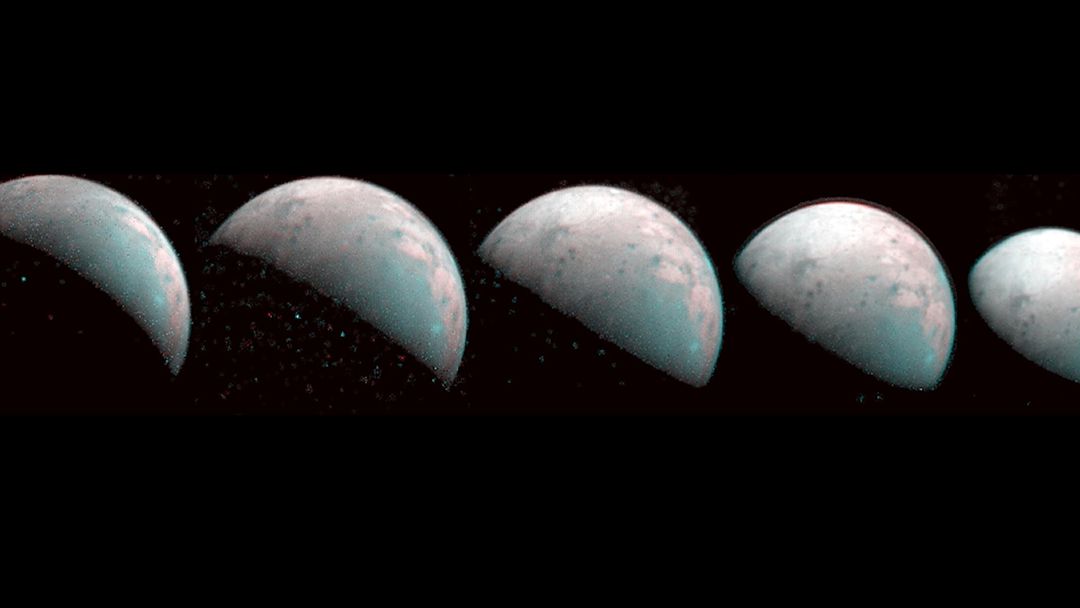The Juno probe, from NASA, was launched in 2011 to explore Jupiter, and continues to orbit the gas giant since 2016. And soon, the probe is expected to approach the largest moon in the Jovian system: next Monday (7), Juno will fly over Ganymede just 1,038 km from its surface — this will be the closest flyover to the natural satellite ever, the last one was made by the Galileo spacecraft, on May 20, 2000.
Ganymede is the greatest natural satellite of the solar system, and this is the only moon in our neighborhood that has a magnetosphere (that is, a kind of bubble formed by charged particles) of its own. Then, when flying over it, Juno will collect composition data, the layer of ice that covers it and its magnetosphere: “Juno carries a set of sensitive instruments, capable of seeing Ganymede like we’ve never seen it before,” said Scott Bolton, principal mission investigator.
For this, the instruments Ultraviolet Spectrograph (UVS) and Jovian Infrared Auroral Mapper (JIRAM) will work together, so that the Microwave Radiometer’s (MWR) can penetrate through the frozen crust that surrounds Ganymede, obtaining data about its composition and temperature. Afterwards, the data obtained will be used by the next generation of missions towards the Jovian system.
Bolton explains that the ice sheet surrounding the moon has lighter and darker regions, suggesting that some may be pure ice, while others may be “dirty ice”: “The MWR will provide the first in-depth investigation of how the The composition and structure of ice vary according to depth, providing a better understanding of how the layer forms and the processes that change it over time,” he commented.
The results obtained will be an important complement to the future JUICE mission, from the European Space Agency, which will investigate the occurrence of underground oceans on the moons Ganymede, Callisto and Europa. When passing behind the moon, radio signals will pass through its ionosphere, which will cause a small change in their frequency. “If we can measure this change, we may be able to understand the connection between the ionosphere and the magnetic field of Ganymede with the magnetosphere of Jupiter”, concludes Dustin Buccino, signal analysis engineer for the mission.
In fact, the JunoCam imaging instrument was created especially to bring the beauty of Jupiter’s exploration to the public. Then, during the quick flyover, the instrument will “see” the transformation of the moon, which will look like a small dot of light until it becomes a disk, and then come back to look like the dot of light. All of this is expected to take about 25 minutes, long enough to produce five images, which will help the mission’s science team find out if there have been changes to the surface of Ganymede.
Source: NASA
Did you like this article?
Sign up for your email on Canaltech to receive daily updates with the latest news from the world of technology.
–
–
–


